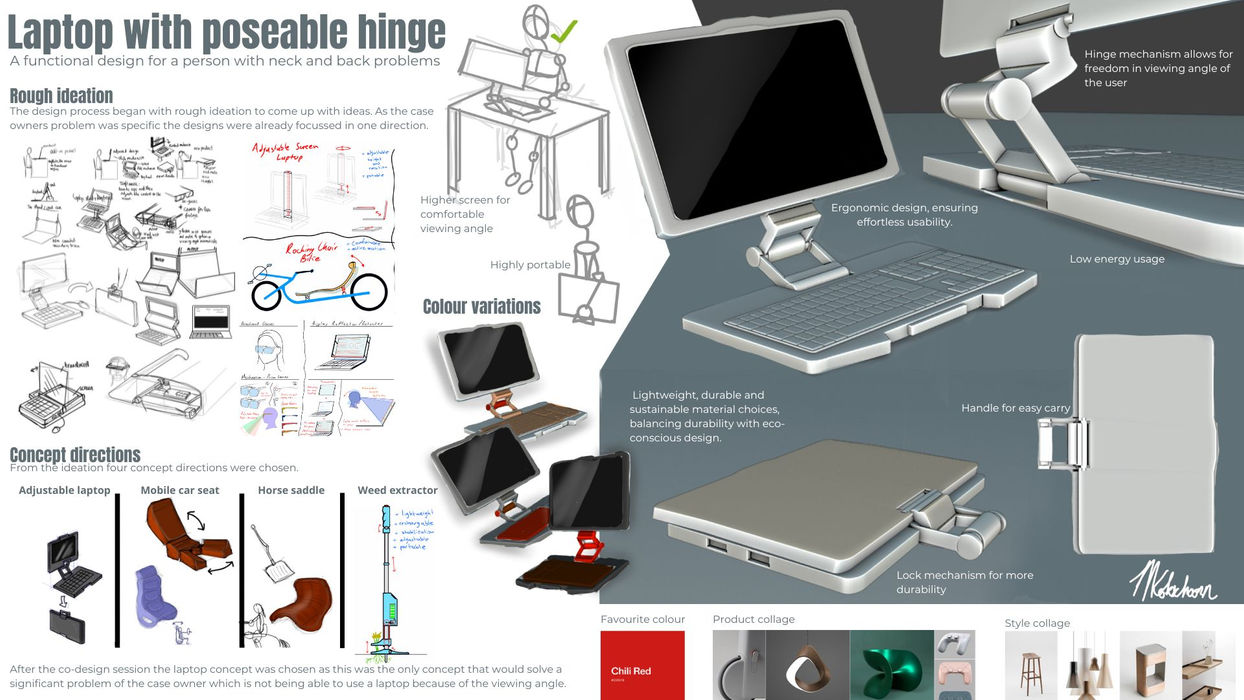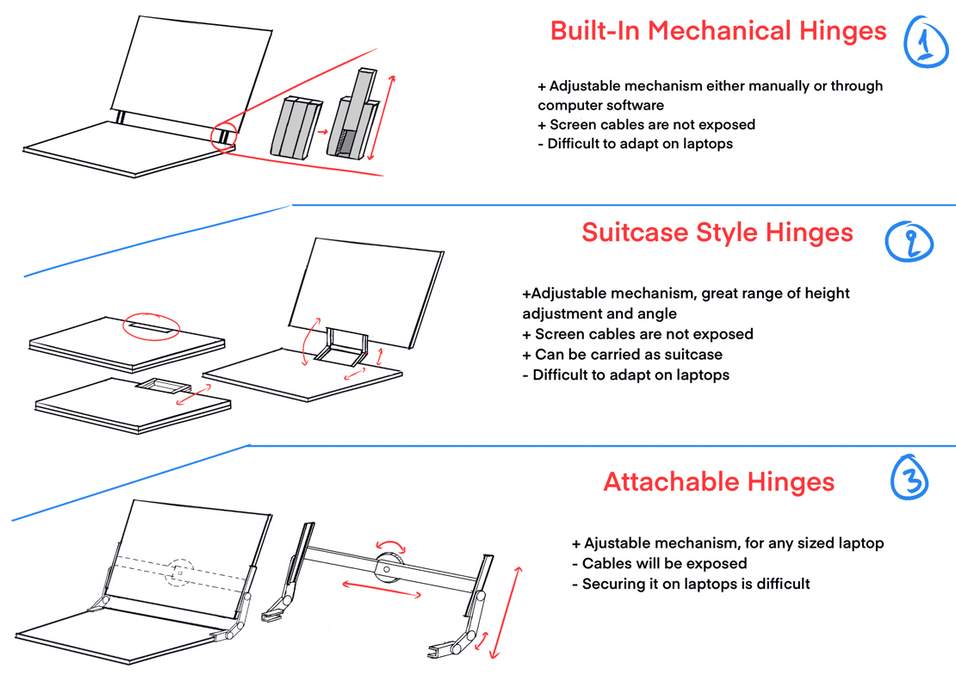Concept
With the results from the co-design session and the final list or requirements, a concept was developed. This concept was presented at the concept presentations, which led to valuable feedback from both students and professionals.
Concept Board
The image below shows the concept we developed after all of the ideation and the co-design session. This is still a relatively rough concept, but it does incorporate the hinge mechanism we explored with the case owner during the co-design session. It also explores some colour variations, including the chili red the case owner loves, and the overall ‘modern technology style’ that a laptop should have.
Click on image to enlarge.
Hinge Iterations
One of the main points of the hinge is that it there are no pre-set heights, meaning the screen can fully adjusted (to a maximum). Besides the height, the screen can still be tilted just like a normal laptop. However, the handle aspect would not necessarily be used by the case owner. When the case owner carries something, the weight has to be distributed equally, meaning they do not carry things in one hand (this was mentioned in the first interview). This means that they would hold the laptop in front of their body with both arms and hands, so for them the handle is not a necessity. Therefore, some more hinge mechanism ideas were explore, as can be seen in the image below.
No final choices regarding the hinge were made, but instead the options were presented at the concept presentation.
Click on image to enlarge.
Concept Presentation Feedback
At the concept presentation, we showed the process of understanding the context (phase 1) to creating a concept (phase 2). We also briefly explained our future potential prototyping steps. We presented all this to other student groups as well as professionals. At the end, we received questions and feedback to consider during the next phase. Some questions we had answers to, but there were some interesting points made.
These are the main points we/others received to consider:
-
Portability - Consider the portability of the laptop. The hinge is a weak spot, and in the concept, it is quite narrow. Will this narrowness be okay? And if not, how can you adjust the hinge so it will be less weak.
-
Handle - If it is carried as a handle, will that potentially influence the strength of the hinge over time? You do not want either function to fail.
-
Ergonomics - Do not only consider the height of the screen, but also how far the screen needs to be away from the user. If the user cannot type blindly, heightening the screen might limit their typing. Check this with case owner.
-
Functioning - Think about all the normal uses that a laptop has. If we change something, no other normal functions/usage should be blocked.
Interested in the concept presentation? Use the link below to view it!
All in all, a clear concept starting point was created. However, this concept still had to be further developed in accordance with the list of requirements. Not only the requirements, but also the thought of 'what is realistic' is important to consider. All of this is explored in the next phase: Final Concept & Prototyping.

